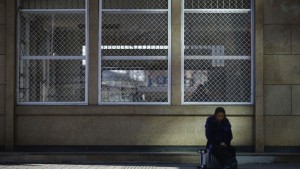In class we have explored the mass migration of China’s youth from the country towards the industrial centers of the coast. At least once a year this trend reverses:
The Chinese New Year and Spring Festival see billions of Chinese return to their rural homes in order to celebrate the holidays with their family. The migration, known as ‘chunyun’ [春运, literally "spring transport" … the prof]in Chinese, will leave major cities in an eerie calm that contrasts the usual city bustle. The Chinese government estimates at least 2.8 billion rail-way trips alone that will carry city dwellers home over the course of the holiday. Gifts of food and money are standard. Thus, this migration will not only see the mass movement of people, but the mass movement of consumption goods and money into the countryside as well.
Chunyun not only demonstrates the scale of China’s urban migration, but also how recently the phenomenon occurred. These Chinese travelers are only one or two generations away from agricultural parents/grandparents. More Chinese may live in urban centers, however they remain embedded culturally to the country through family. However, the longer Chinese work and settle in cities, the further they distance themselves from such roots. A few generations from now, Chunyun could be a trip around the block, not across the country, to visit grandparents. This shows a changing culture and consumer complexion for China’s future.
Those who remain in the cities enjoy the “respite.” Social media has become inundated with pictures of “blue skies, clear highways, and spooky, empty shopping malls.” This reflects the growing prevalence of cell phones and the internet in China. Chunyun remains an interesting annual phenomenon in China. Its implications on urbanization and cultural identities are equally interesting as well.
Sources:
http://qz.com/346072/beijing-has-turned-into-a-beautiful-ghost-town-for-chinese-new-year/
http://english.sina.com/china/2015/0216/783937.html
“Billion” is far too large. Only half of the population lives in towns and cities, and many of those are either so close to home that they don’t need special transportation, or are true urbanites with no ties to a “natal” village and thus no reason to travel. The real number may be closer to 100 million, of whom some will choose not to fight the insanity. Still, don’t plan on taking a train during Chinese New Years!
The temporary exodus also has implications on the manufacturing economy, which sees large scale reductions in both quantity and quality of labor. The effect is so large that 春运 even effects economic indicator indexes, such as the PMI.